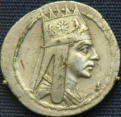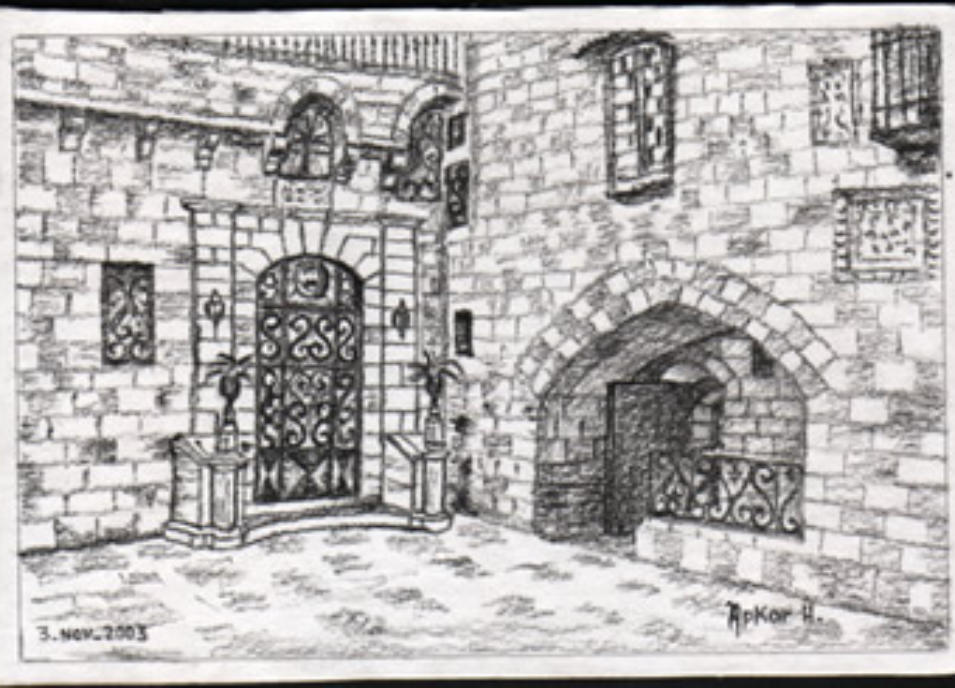




Armenian Jerusalem

The tiny community of genocide survivors and their descendants
living in the Armenian Quarter of the Old City of Jerusalem, has taken
a bold and determined step toward ensuring that their unique place
in the history of this immortal city, is not irretrievably lost. With the
perennially relentless threat of assimilation and attrition dogging
their footsteps, the “kaghakatsis” – literally, city or native dwellers –
are caught up in a brain drain that could, they fear, make their
decreasing number dwindle even further.
Community leaders voice their fears more bluntly. “What we are facing is extinction and oblivion,” they say. Kaghakatsi Armenians are a genealogical oddity: every single member of the community is related to everyone else in the community, either directly or indirectly. Takoug Khatchadourian (nee Kevorkian) is the sister-in-law of the famous composer Ohan Durian. But she is also the aunt (on the father’s side) of Hagop Hagopian (originally Hovsepian). That makes Hagop’s sons and daughter kin to Durian. At their peak, the kaghakatsis numbered in the thousands. Now they are down to a few hundred. But this tiny enclave whose members have been making their home in the cobblestoned alleys of the Old City for centuries, have enriched the variegated tapestry of Jerusalem with their blend of unique culture, their traditions, their arts and crafts, their cuisine. For generations, many of the houses in the Armenian Quarter would have been inhabited by the same family. The slipshod nature of the Ottoman art of masonry is evident in the meter-thick earth walls and the ramshackle foundations. Little allowance has been made for sunlight and ventilation and the wall plaster cakes continually, as the walls shed their whitewash under the onslaught of humidity. The houses are blessed twice every year (at Christmas and Easter) by the parish priest, "and that is perhaps what helps to make them safe and habitable," quips one resident. The kaghakatsis have played, and continue to play, a leading role not only in maintaining and perpetuating, the Armenian presence in the Holy Land, but also in helping to make this world a better place to live in. “True, we occupy a coveted niche in the history of the Old City, but unless we take prompt measures to preserve our entity, our history will no more be known,” community leaders warn. With the timely launch of the enterprising kaghakatsi Family Tree Project, this threat of extinction will hopefully be safely removed, project organizers say. The project has so far collated genealogical details of over 800 kaghakatsi Armenians from among the members of the score of leading “clans,” relying mostly on personal reminiscences and recollections. But the years may have shrouded some of these in obscurity. The organizers pin their hopes on validating their data by tapping the vast archives of the Armenian Patriarchate of St James, which date back some centuries. “Old birth, death and marriage certificates would be our principal source of information,” say the organizers. And old family photographs. The organizers concede that there are plenty of gaps in the kaghakatsi family tree database that need to be filled. “For instance, we may have the name of a grand-grandmother, but no one remembers her maiden name, or the date of her birth,” they note. The information gathered so far is housed in a main computer database that will make it possible to print out or display pages of selected branches of the tree or an “all-in-one” showing the whole sprawling network of relations, in an Adobe Acrobat (PDF) file. A secondary, backup computer database using different software, has also been created. A unique domain name for the project has now been registered and the project enshrined on the internet at: www.armenianjerusalem.altervista.org The initial, modest family tree project begun last year has been growing by leaps and bounds. The organizers note that the website will not only host the family tree of all the kaghakatsis, but also their history and way of life, and a record of their achievements, and will include photos, artwork, anecdotes, traditions, proverbs, cuisine, etc. “We need all the help and support we can get,” the organizers note. “This is a labor of love, and we try to keep expenses to an absolute minimum, “ they say. “However, we do need to constantly update the software and hardware, pay our internet service providers, and so on,” they add. “And we need more genealogical data. Without the help of contributions from every single living kaghakatsi, wherever her or she may be, we cannot hope to complete the record and make this vital community project succeed,” they point out. They invite anyone possessing information of any nature on the kaghakatsi Armenians to contact them at admin@armenian-jerusalem.org (Sydney, Jan 24, 2008)
Home | Disclaimer | Access






















